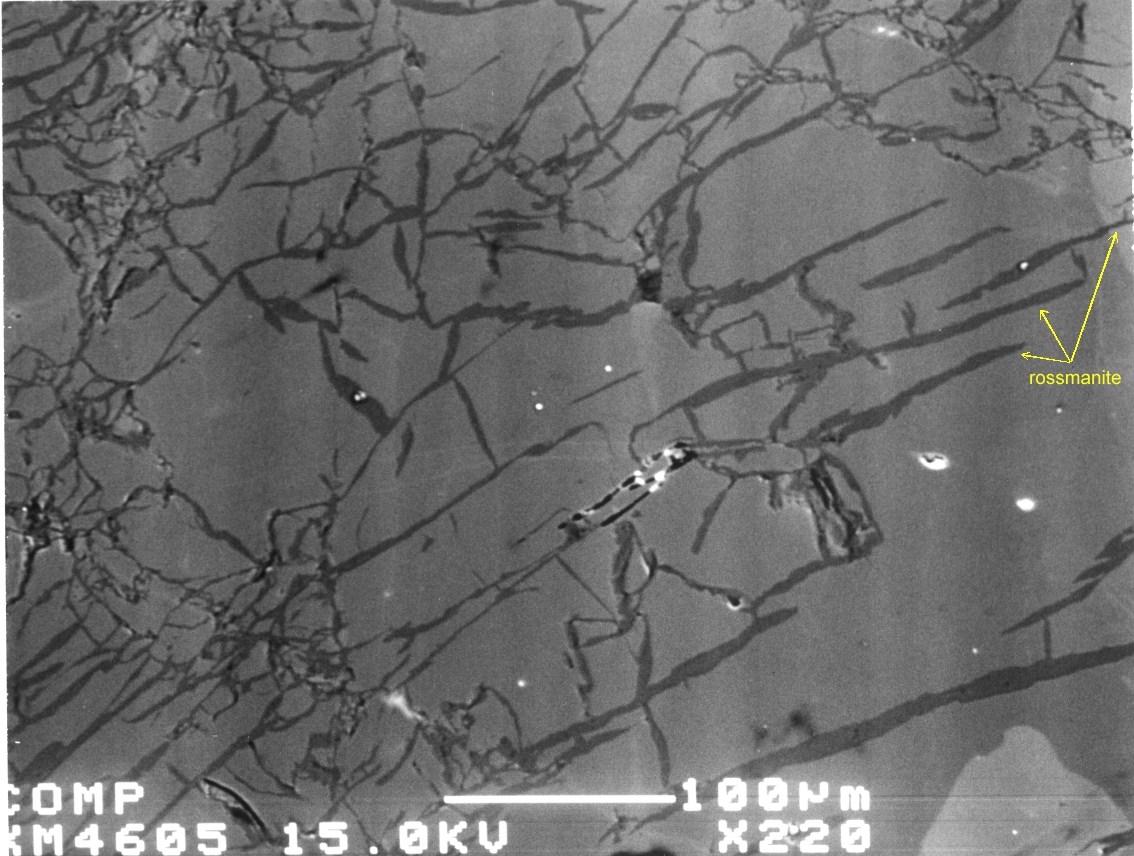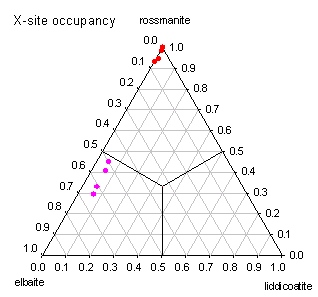

Back-scattered electron image of thin veins of near-endmember rossmanite (dark grey) cross-cutting the host elbaite (medium grey). Image courtesy of Ai Cheng Zhang.
Rossmanite occurs in an albite (cleavelandite
variety)- spodumene zone as thin veinlets (10 to 20 micrometers
wide) within the main mass of 1 to 3 cm light pink elbaite
crystals. Its formation is believed to be the result of the
interaction of late stage, Na- and Ca-deficient hydrothermal
fluids passing through and filling pre-existing cracks in the
elbaite.
Composition
These veinlets of rossmanite are noteworthy for their low Na and Ca contents. One analysis point revealed an X-site vacancy of 1.00, indicating that it was nearly pure rossmanite. This is the composition closest to end-member rossmanite reported to date.
A typical composition is
X([]0.95Na0.04Ca0.01)
Y(Li0.94Al1.93Fe0.09Zn0.03)
ZAl6.00
(BO3.00)3.00
Si6.00O18.00 [(OH)3.95F0.05]

References:
Zhang AC, Wang Ru, Hu H, Chen XM (2004) Occurrences of foitite and rossmanite from the Koktokay No. 3 pegmatite dyke, Altai, Northwestern China: A record of hydrothermal fluids. Canadian Mineralogist, 42, 873-883.
Yin R, Huang XL, Wang RC, Wei GJ, XXu YG, Wang Y, SUn XM, Ahang L, Xia XP (2023) Magmatic-hydrothermal evolution of the Koktokay Number 3 pegmatite, Altai, northwestern China: Constraints from in situ boron isotope and chemical compositions of tourmaline.Lithos 2023, 462-463, 107398Zheng B, Chen M, Zhang Y (2024) Chemical and boron isotope composition of tourmaline from Koktokay pegmatite, Altay Orogenic Belt, Northwest China: Implications for metallogenic mechanism and prospecting indicator for rare-metal pegmatites. Geochemistry (Munich, Germany), 84, 126071
last upgraded: 14-Dec-2019